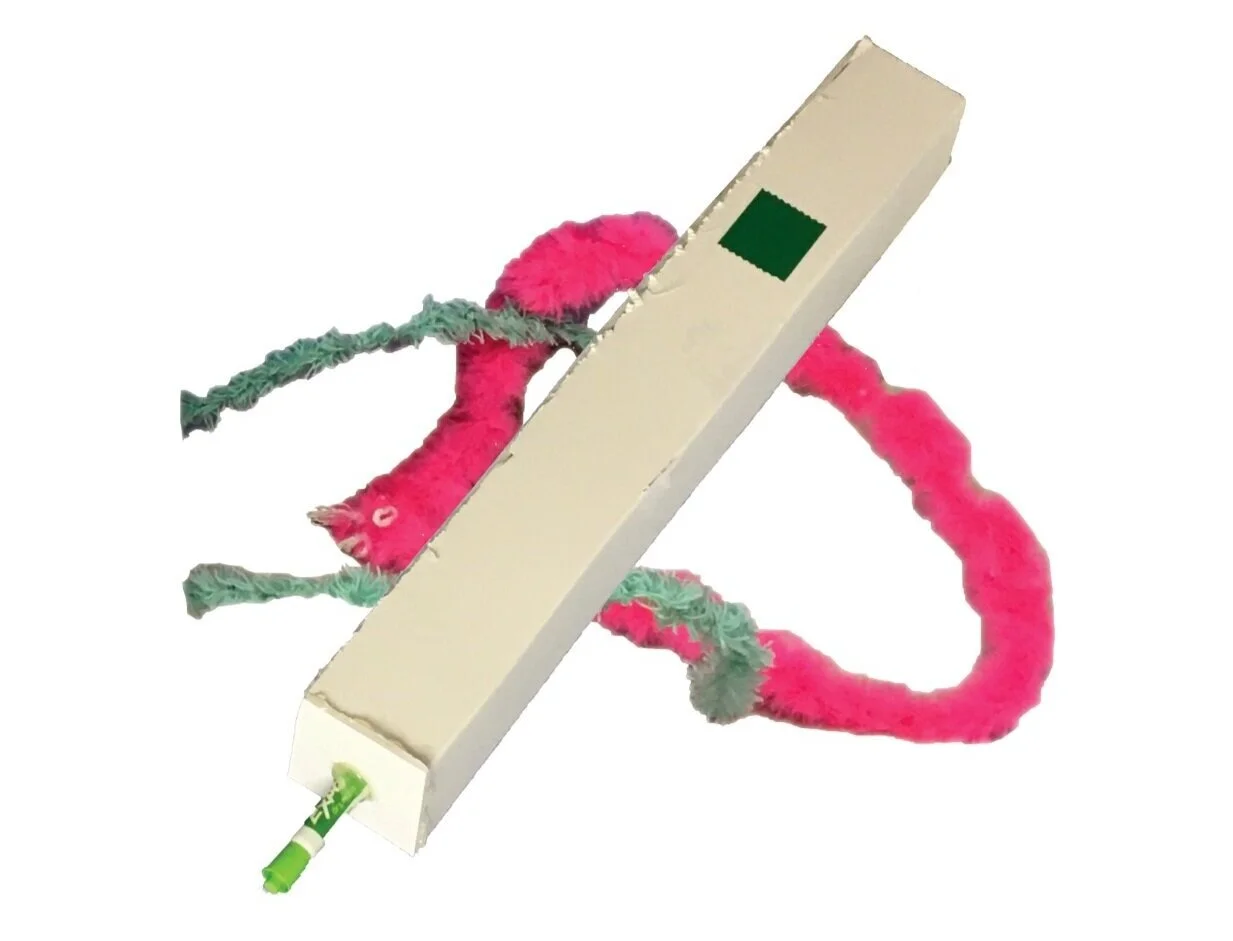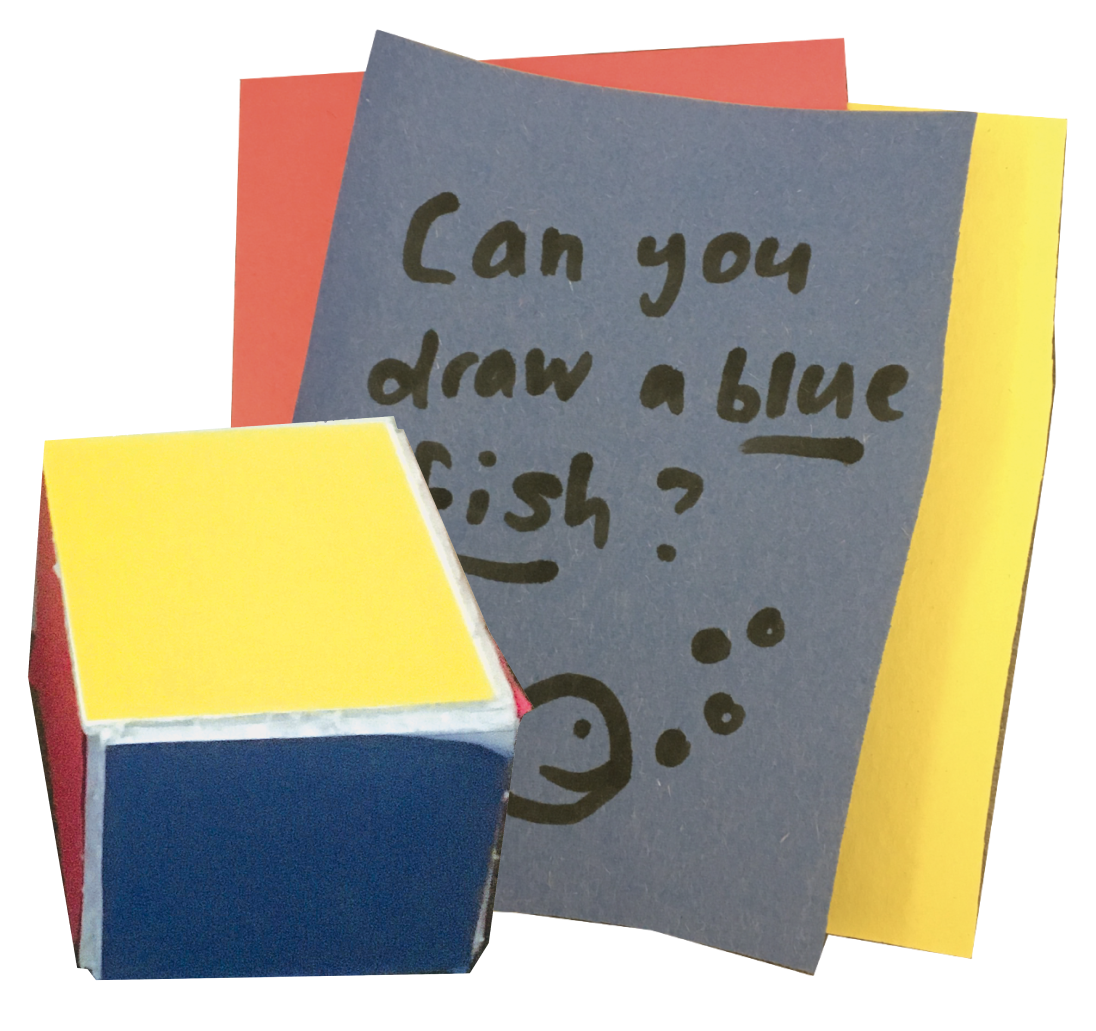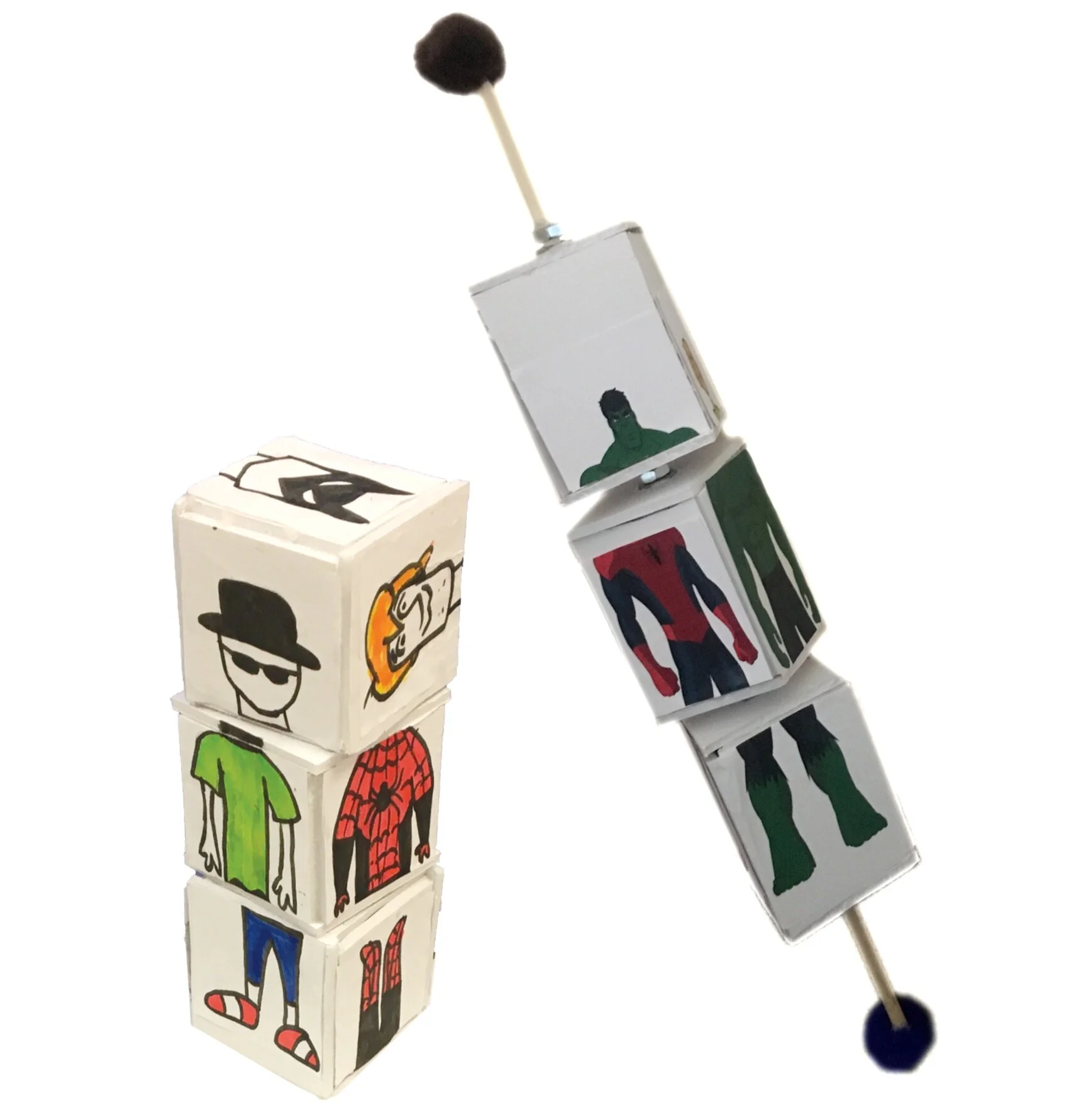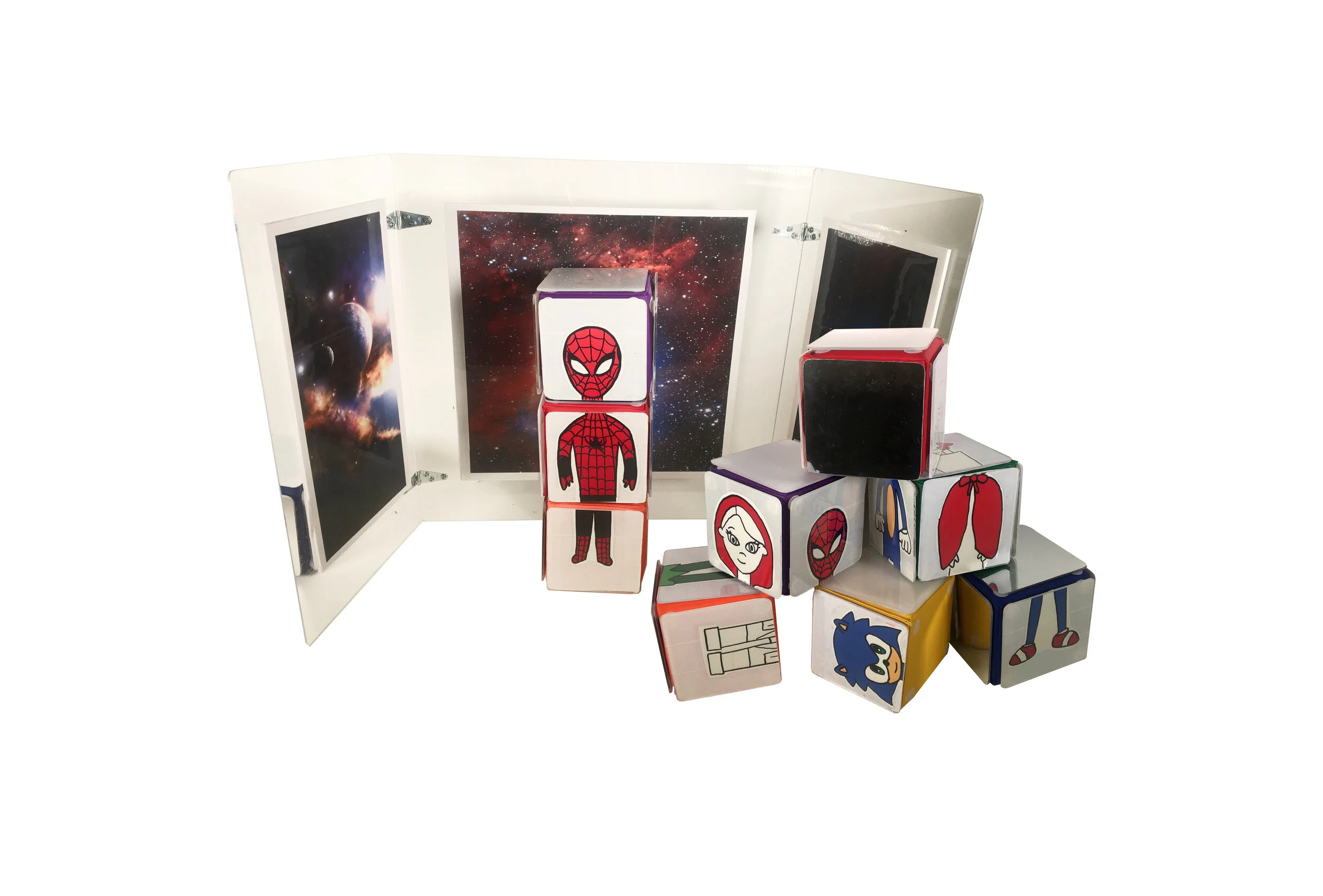Zach and Keegan’s Imagination Station — Overview
A 10 week journey getting to know two children with autism, learning about delight, and designing to delight specifically Zach and Keegan.
Background and Goals
As part of an Impact Design course, my team was paired with Keegan and Zach, two autistic children at the Hartford Autism Regional Program (HARP). In a world not designed for autistic individuals, we were not trying to fix our kids. Our challenge was simply to create something delightful for Keegan and Zach.
Product
Zach and Keegan’s “Imagination Station” is a customizable, private space that facilitates independent play.
Removable tri-fold panels and mix-and-match cubes offer maximum customization.
Hand drawn characters and whiteboard surfaces combine existing favorites with new ideas.
Child-proofed extensively for safety, easy to navigate without precise motor skills.
Skills
• Observational study • Physical prototyping • Accessible design • Experience design • Quantifying impact
Time Frame
9 weeks
Team
Callie Page, Maxine Perroni-Scharf, Winston Wang, Cindy Yuan
My Responsibilities
Removable art panels, accessibility details, rubrics for measuring delight
User Research:
How could we make something delightful for two individuals with autism?
Meeting Zach and Keegan
As Keegan and Zach were both low-functioning on the autism spectrum, we conducted an observational study at HARP. As a notetaker for Keegan, I noted down his attention span, his interests, and the way he expressed emotions through motions and sounds.
Main Learnings:
Keegan likes colors and abstract art; Zach likes precise, monochromatic lines.
Both Zach and Keegan love art in an independent way.
They aren’t friends at all.
How might we bring delight to both Zach and Keegan while allowing them to be creative in their own unique ways?
Prototyping and Testing
We picked out three categories in which to explore possibilities for delight through their shared art experience. We kept our prototypes simple, and asked: what could capture their attention and interest?
What if we turned art into a physical experience?
Physicality: Giant Art Supplies
Keegan and Zach liked to incorporate physical activities, like carrying heavy backpacks, to keep themselves calm. We created two big markers of different sizes and two large pipe cleaners to bring this large movement into drawing and crafting.
Results: Both wanted to spend as little time with this as possible.
Keegan didn’t want them at all. Zach drew something out of obligation with the giant marker but then asked for the cap back so he could put it away.
What if we turned the creative process into a game?
Gamification: Prompted Drawing
As their current art time was completely unstructured, we wanted to see if they cared for prompts. We made colored cards with a written prompt on each to draw something specific. Our second variation includes a colored cube that they can toss before picking a colored card.
Results: Refusal from Keegan, “meh” from Zach.
Keegan refused to interact with the cards or the cube. Zach tried a few prompts and drew the prompted items on the cards, but did not seem to be delighted in the slightest.
What if we took what they already loved to draw, and mixed it up?
Inspiration: Mix-and-Match Blocks
Both kids like to draw cartoon characters, sometimes repeatedly. We hoped that an interactive mix-and-match would inspire their current artistic process. We took their favorite cartoon characters to create two versions of mix-and-match blocks. The first was a set of three cubes with a larger “scenery” cube. The second was a stick with blocks that spun with a satisfying sound.
Results: A hit with Keegan! … but Zach didn’t care.
Keegan played with all four blocks and even used his own crayon to add to the landscapes and color in characters. Zach was entertained by the spinning version for a minute, but soon put it down to draw something else that was on his mind.
Pivoting to Design Our Product
Our kids were most delighted when left to create on their own terms. In order to accommodate their different styles, we pivoted to enhancing the experience of independent play.
Introducing Zach and Keegan’s Imagination Station!
We built from our most successful prototype to create a personal space for Keegan and Zach to be immersed in their own independent processes. Our core features included…
Acrylic Tri-folds
24 inch height — Zach likes to sit and Keegan likes to stand.
Handcrafted from acrylic boards, foldable and dry-erase compatible.
Sanded corners and a detachable base stabilizer for safety.
Rearrangeable Panels
Lightweight foam core panels, laminated and dry-erase compatible.
Landscape panels offer a setting for hand drawn characters to come to life.
Mirror panels for self-integration through acting or drawing on “yourself.”
Blank whiteboards for any art or writing.
Mix and Match Cubes
Set of 6 that comes to life when paired with landscape panels
Covered in removable, dry-erase compatible acrylic tiles.
Featured hand-drawn characters, mirrors, and whiteboards.
Results
Delivering the Imagination Station and measuring Zach and Keegan’s delight.
Delivering Delight
Zach and Keegan prefer relaxed environments and can get overstimulated by loud noises or fanfare, so we kept our delivering experience simple.
Anticipation — We set the scene with certain panels, and wrapped up our cubes in superhero wrapping paper.
Reinforcing Privacy — We included personalized drawing kits to reinforce the idea that the Imagination Station is a separate space.
Relaxed Creativity — With a few of their favorite snacks and a short demonstration, we created a relaxing space with our product as the focus.
Measuring Delight
Using the notes from our initial observational study and prototype testing, I created two rubrics that we brought to the final delivery to measure how delighted Zach and Keegan were. Because they had different attention spans and methods of expression, each rubric was very personalized.
Keegan was completely immersed in the space, switching out panels, drawing on surfaces, and acting out scenes with characters for over 30 minutes. He even used the Imagination Station in ways we didn’t expect, incorporating his own toy. Click the video to see Keegan’s delight!
While Zach felt unwell on the morning of our visit, the program director at HARP later updated us that he had been choosing his Imagination Station in his free time, especially using the white board panels!
Reflection
Brainstorming next steps and reflecting on this unique design experience.
Next Steps
While we worked hard to ensure that our product would be usable in the long term, we have some next steps in mind if given the opportunity to continue: creating a nicer storage box for everything, slightly smaller cubes, more customizable panels, and higher quality building materials. Additionally, we would love to observe how our Imagination Stations were used over a longer period of time, to see if they remained attractive and fun past the initial introduction.
My Takeaways
This project was a delight to work on, and unlike anything else I’ve ever tried before. It was refreshing and challenging to focus on creating delight.
The main challenges I had were:
Designing for and measuring “delight” — Since delight is such a personal thing, we observed how Zach and Keegan expressed their emotions and created a rubric to measure if our product delighted them.
Inclusive design through physical affordance — Our kids were both low-functioning on the spectrum, so we carefully observed and accounted for their cognitive/physical abilities throughout the process.
Building one product for two very different people — Prototype testing revealed that they liked very different things. In order to accommodate this without forcing them out of their comfort zone, we turned to a customizable product.
Designing for autistic individuals meant that we had to cast out our own ideas of what might be fun or joyful. We learned how Keegan and Zach expressed their emotions in their unique ways as they navigated the world. During our process, we realized that we could not ask two different people to enjoy the same things. In order to capture real delight, we designed something that would help them to do what already delights them the most, in a simple form that they could use. Creating a high quality, physical product that would actually be used by kids challenged me to think to be very meticulous about quality, affordance, and safety.











